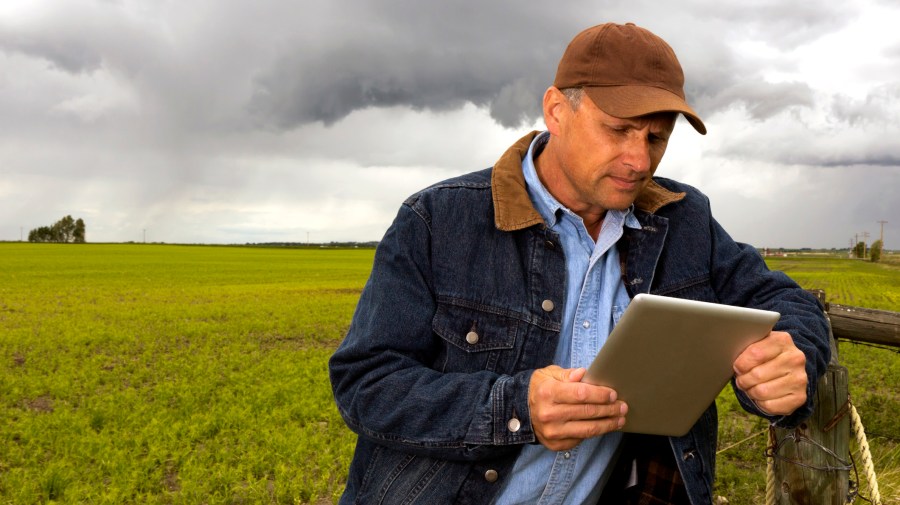How Do You Find the Best Long-Term Weather Forecasts?

Throughout the U.S., the weather can be quite unpredictable, even with state-of-the-art radar, sensors and computer modeling technology right at meteorologists’ fingertips. Regions of the country experience vastly different climates, requiring you to pack an entirely different wardrobe for a summer trip to Florida than a summer trip to Maine. Changing weather fronts and storm conditions merely add to the complexity of figuring out what to expect from the weather each year.
Of course, on a normal basis, you can easily check the daily forecast for your city and trust the information well enough to plan your day around it. If the forecast includes rain, make sure your umbrella is in the car. If it predicts sunny skies and high temperatures, dress in lightweight clothing with short sleeves. That’s simple enough, but what happens when you need to see a little farther into the future for a big event? It’s much more challenging to find long-term forecasts you can trust for future planning.
Before you plan a big outdoor wedding three months from now or finally book that long-awaited dream vacation, it’s a good idea to do a little digging to try to get a potential peek at likely weather scenarios during a particular future timeframe. When you go beyond weather 10-day forecasts, you run into some limitations, of course, but you can increase your odds of successful planning by following a few helpful tips for researching long-term weather forecasts.
Consult The Old Farmer’s Almanac
The Old Farmer’s Almanac first provided valuable statistics and data about farming crops, astronomy and the weather in 1792. More than two centuries later, the publication — which also takes a humorous point of view — is widely available in many grocery checkout lines, gas stations, bookstores and even at your local Chamber of Commerce (in some cases). Released each September, the almanac sorts and averages 30 years of weather information for the U.S. and Canada according to geographic region, providing readers with a history of the weather in each particular area.

All those facts and details are compiled to create long-term weather predictions. As you examine those predictions, make sure you understand the terminology related to the almanac’s long-term weather forecasting to avoid confusion. For example, predicting “mild” temperatures during a particular window of time means the temperature will be milder than the 30-year average. It doesn’t mean the actual degrees will feel mild to the average person. Additionally, the almanac will never try to predict weather conditions on a particular day and time, only for spans of time.
If you think it sounds impossible that a printed publication could provide reliable estimates of weather forecasts, then it may help to know that long-range forecasts in the almanac use some hard science, including climatology, solar science and meteorology. Scientists look at the relationships between past solar patterns and weather conditions to make predictions about future weather conditions based on future solar activity. The almanac’s predictions span up to 18 months in advance and have been accurate about 80% of the time.
Visit The Old Farmer’s Almanac Website
If you prefer quick and easy access to almanac information online, check out the The Old Farmer’s Almanac website instead of purchasing the publication. You can view two months of long-term forecasts for numerous regions and cities around the country for free, but you will have to purchase online access or a printed copy to view forecasts farther out. The website is also loaded with many other great features, including gardening how-to videos, cooking videos, recipes and numerous calendars.

Look for TV Forecasts Powered by AccuWeather
AccuWeather started offering its long-range weather forecasting to private clients and then the general public in September and October 2018, respectively. The weather team for the service carefully analyzes historical and current weather data, meteorological data, artificial intelligence and ocean data. They also look at more than 170 forecasting models from around the world to compile their 14-day weather forecasts for more than 3.5 million worldwide locations.

Numerous studies have proven AccuWeather to be the most accurate long-range forecaster based on forecasting techniques that are unsurpassed. For years, AccuWeather wouldn’t participate in long-range weather forecasting due to the inaccuracies, but they successfully moved into this niche after expanding their understanding of the relationship between the ocean and the atmosphere. Today, AccuWeather powers the forecasting engines of many local TV networks as well as major broadcast news channels. Look for the logo on your favorite weather station.
Use Highly-Rated Weather Sites and Apps
A division of the National Oceanic and Atmospheric Administration (NOAA), the National Weather Service (NWS) is the organization tasked with keeping everyone safe when dangerous weather conditions are coming our way. NWS early warning systems for flash floods, tornadoes and severe storms have saved a lot of lives, but the organization is also a great resource for finding accurate forecast information and seasonal and annual climate predictions.

The Weather Channel has also been a respected provider of accurate weather forecasts and information for many years. Monthly forecast pages are available for locations all across the country and feature helpful almanac information with historical averages in addition to predictions for the selected month. Calendars are available for a year into the future but only include info on historical averages after the first 15 days. The Weather Channel also has a mobile app for download on iOS and Android devices.
Additionally, numerous app designers have created reliable weather apps for on-the-go use on mobile devices. AccuWeather (noted above) continues to excel in the mobile weather arena by offering unique features like allergy alerts. Owned by IBM, Weather Underground offers interesting details like air quality readings along with accurate forecasts. WeatherBug and Yahoo Weather have both been around a while and continue to please users with their features, including lightning detection (WeatherBug) and real crowdsourced images (Yahoo). With plenty of options to choose from, start by testing apps with the highest ratings to find the one you like.





